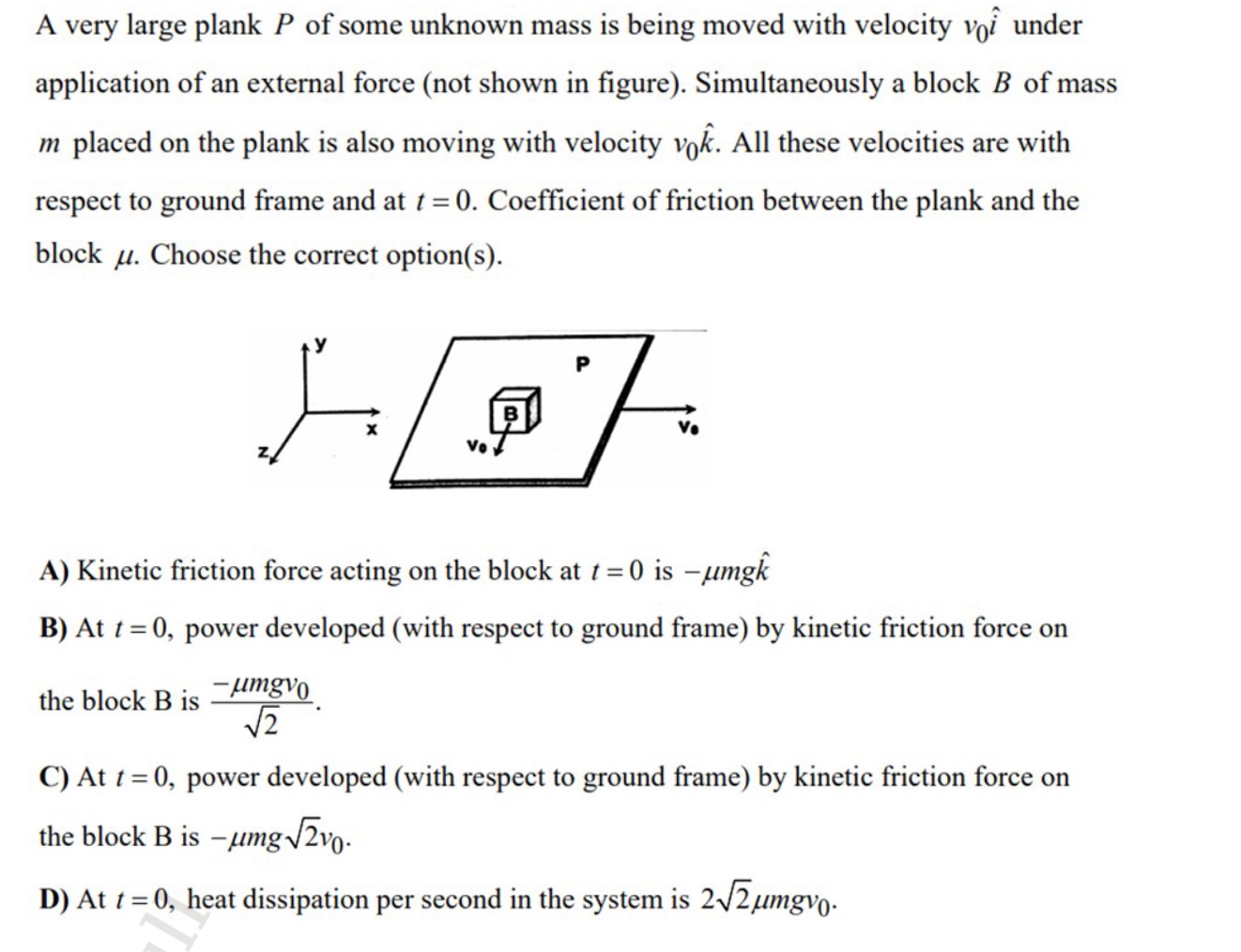Question
Question: A very large plank $P$ of some unknown mass is being moved with velocity $v_0\hat{i}$ under applicat...
A very large plank P of some unknown mass is being moved with velocity v0i^ under application of an external force (not shown in figure). Simultaneously a block B of mass m placed on the plank is also moving with velocity v0k^. All these velocities are with respect to ground frame and at t=0. Coefficient of friction between the plank and the block μ. Choose the correct option(s).

Kinetic friction force acting on the block at t=0 is −μmgk^
At t=0, power developed (with respect to ground frame) by kinetic friction force on the block B is 2−μmgv0.
At t=0, power developed (with respect to ground frame) by kinetic friction force on the block B is −μmg2v0.
At t=0, heat dissipation per second in the system is 22μmgv0.
Option B is correct
Solution
- Relative Velocity:
The plank has velocity vP=v0i^ and the block has vB=v0k^.
Thus, the block’s velocity relative to the plank is
with magnitude ∣vB/P∣=v02+v02=2v0.
- Friction Force on the Block:
Kinetic friction opposes the relative motion. Its magnitude is μmg. Therefore, the friction force on the block is
fB=−μmg∣vB/P∣vB/P=−μmg2k^−i^.Hence, it is not solely in the k^ direction. (Option A is false.)
- Power Developed by Kinetic Friction on the Block:
Power P=fB⋅vB with vB=v0k^:
P=−μmg2k^−i^⋅v0k^=−μmg2v0(1−0)=−2μmgv0.(Option B is correct; Option C is false.)
- Heat Dissipation (Rate):
The heat dissipated is the sum of the work rates done by friction on both bodies. The plank experiences the equal and opposite friction force fP=−fB and moves with velocity v0i^:
PP=fP⋅vP=μmg2k^−i^⋅v0i^=−2μmgv0.Adding the block's contribution:
Ptotal=−2μmgv0−2μmgv0=−2μmgv0.The magnitude of heat dissipation is 2μmgv0 (not 22μmgv0); (Option D is false).
